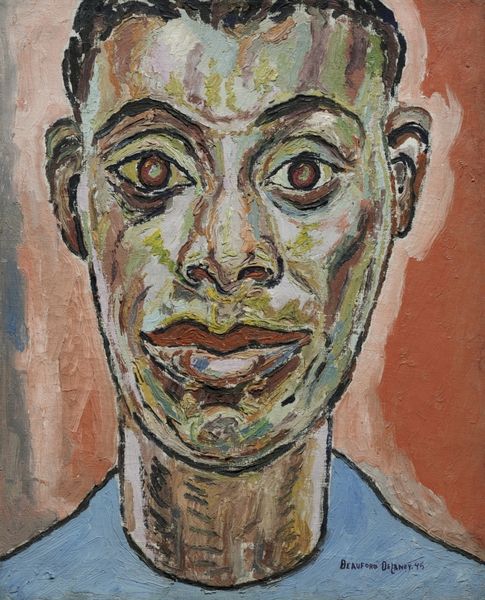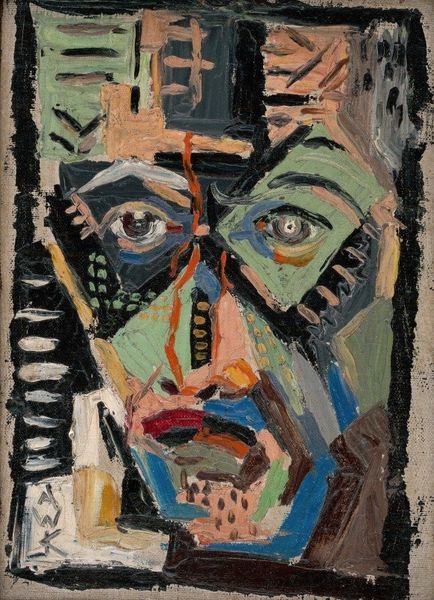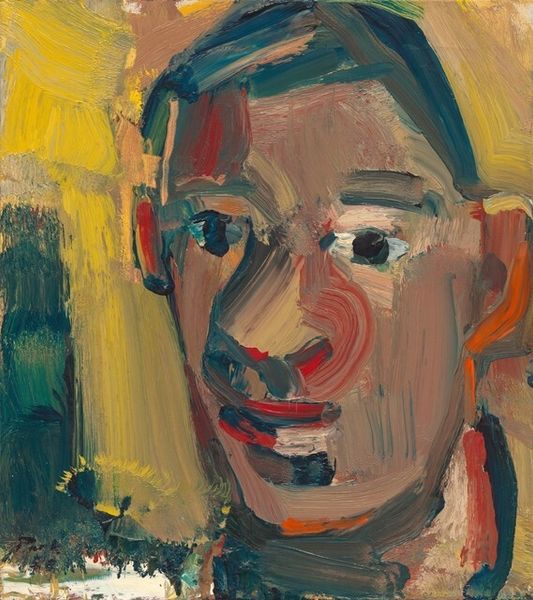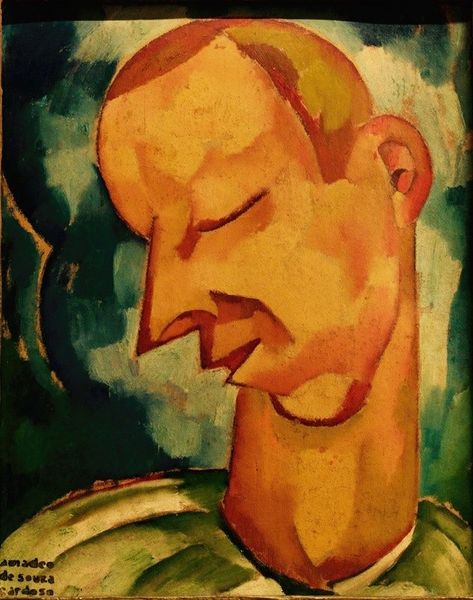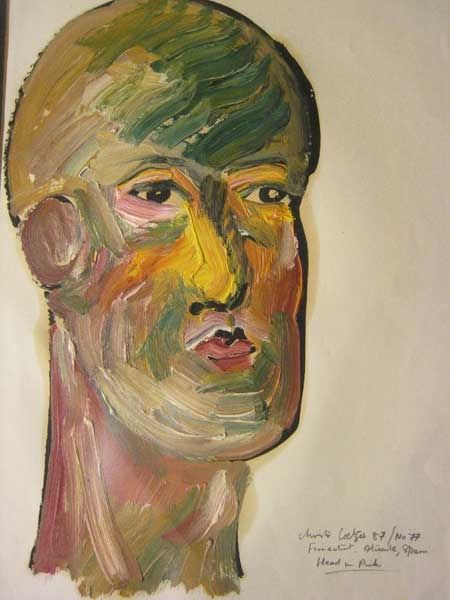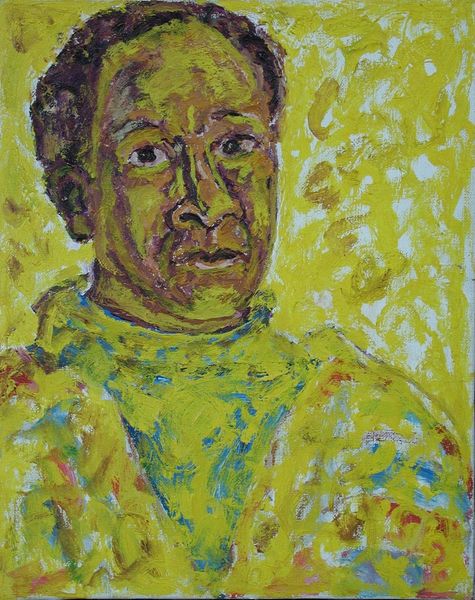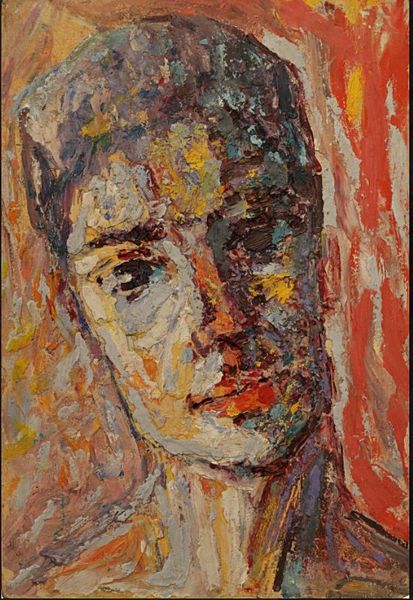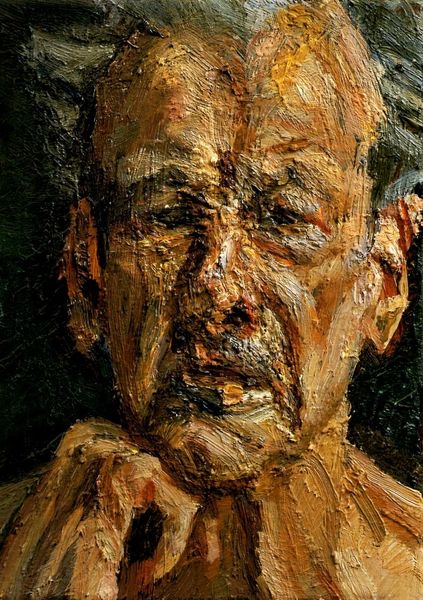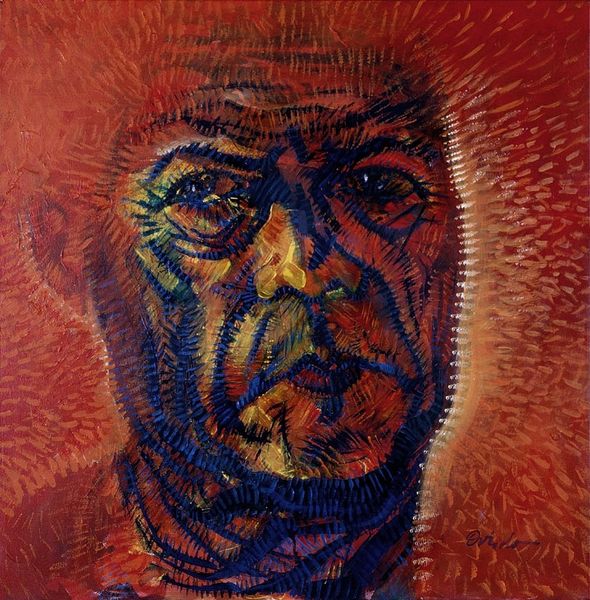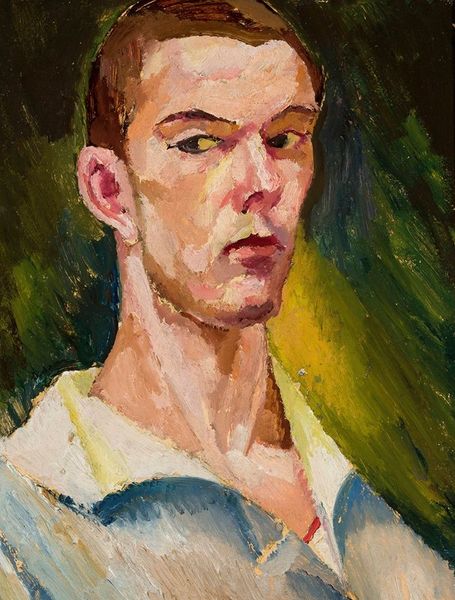
Copyright: Albert Huie,Fair Use
Editor: This is Albert Huie’s “Self-Portrait,” painted in 1943 using oil paint. I am immediately struck by the vivid color palette and the somewhat tense expression. What do you see in this piece, beyond just a man looking intently forward? Curator: Observe how Huie uses impasto—thick layers of paint—to build the form, not just to depict light, but almost to sculpt the face itself. Notice the chromatic scale; how various yellows, reds, blues create this form? It is not an exact rendering; it is an arrangement of color, of pigment, that strives towards representation. What structural choices contribute to the expression you perceive? Editor: I see it! The shadows are more like planes of color, which sharpen his gaze and create this stern image. What’s with the blank canvas in the left? Curator: Indeed. Notice how the unpainted canvas establishes the depth. And observe that is slightly tilted, which means it breaks the right angles. The slight disorientation adds tension. Think about semiotics: it can signify unrealized potential or perhaps challenge to Huie himself, a comment on the artistic process. Do you concur? Editor: I agree, his intense gaze might signify focus or questioning his path, the structural choices clearly reflect internal complexities. Curator: And remember, too, how the tangible texture draws attention to its making. The painting wants you to notice itself as an object. It is like a conversation. Editor: This close observation definitely opened new ways of seeing beyond his stern gaze and the unpainted canvas on the left, but as a deep contemplation about Huie's artistry. Thank you. Curator: Yes. The self-portrait becomes more than just a representation. By dissecting form, texture, and composition, it echoes deeper self-reflection, an introspective conversation made of color and canvas.
Comments
No comments
Be the first to comment and join the conversation on the ultimate creative platform.
